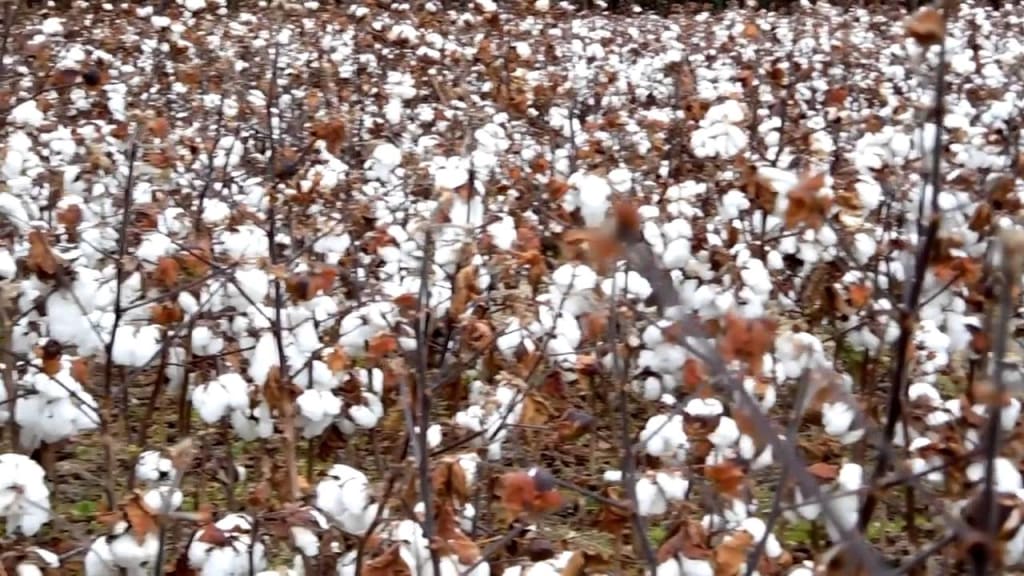RESMI COTTON
"Resmi Cotton: Tracing the Historical Thread of a Textile Staple"

The history of resmi cotton is deeply interwoven with the evolution of civilizations, trade routes, and technological advancements. From its humble beginnings as a natural fiber to its transformation into a globally traded commodity, the journey of resmi cotton is a testament to human ingenuity and the power of innovation in the textile industry.
Ancient Origins and Domestication:
The origins of resmi cotton can be traced back to ancient times, with its domestication believed to have taken place in the Indus Valley around 3000 BCE. The fertile lands of the Indus River provided an ideal environment for cultivating cotton plants, which yielded fibers that were spun and woven into textiles. This early cotton, however, had relatively short fibers, making it less suitable for fine weaving.
Spread of Cotton Cultivation:
The cultivation of cotton gradually spread across various regions, including Egypt, the Arabian Peninsula, and Central Asia. The Arab merchants played a significant role in disseminating knowledge about cotton cultivation and weaving techniques during their extensive trade networks.
Medieval Trade Routes:
Cotton's popularity continued to grow along with the expansion of trade routes. By the medieval period, cotton textiles from India and the Middle East were highly sought after in distant markets, including Europe. Cotton fabrics, known for their comfort and versatility, found favor among consumers and contributed to the enrichment of cultures along these trade routes.
Cotton in the Islamic World:
The Islamic world played a pivotal role in advancing cotton cultivation and textile production. Islamic scholars and artisans developed innovative methods for processing cotton fibers and creating intricate patterns on textiles. The knowledge exchanged through trade and travel led to the spread of advanced weaving and dyeing techniques.
Colonial Era and Industrial Revolution:
The colonial era and the Industrial Revolution marked transformative periods in the history of cotton. European powers established colonies in regions conducive to cotton cultivation, such as the American South and parts of Asia. The advent of mechanized spinning and weaving during the Industrial Revolution revolutionized cotton production, enabling textiles to be manufactured on a larger scale.
Ginning and the Cotton Gin:
The invention of the cotton gin by Eli Whitney in the late 18th century had a profound impact on cotton cultivation and resmi cotton production. The cotton gin mechanized the process of separating cotton fibers from their seeds, significantly increasing the efficiency of cotton processing. This innovation revolutionized cotton production and contributed to the expansion of cotton cultivation across the American South.
Cotton as a Global Commodity:
The 19th century saw the global commoditization of cotton. Cotton became a sought-after raw material, driving economic growth and shaping the course of history. The demand for cotton textiles led to the growth of plantation economies in various parts of the world, including the American South and colonies in Africa and Asia.
Challenges and Innovations:
Despite its popularity, cotton cultivation faced challenges such as pests, diseases, and fluctuating market prices. Researchers and scientists worked on developing pest-resistant cotton varieties and improving cultivation practices to ensure sustainable production. The introduction of genetically modified cotton varieties with enhanced traits marked a significant turning point in cotton agriculture.
Modern Resmi Cotton Industry:
In the modern era, the resmi cotton industry is marked by technological advancements, sustainable practices, and global trade networks. Cotton-producing countries cultivate different varieties of cotton, each with its unique characteristics. These varieties are traded on the international market, contributing to the creation of diverse textiles that cater to consumer preferences.
Sustainability and Ethical Practices:
In recent years, sustainability has become a key focus in the resmi cotton industry. Initiatives promoting organic cotton farming, responsible water management, and fair labor practices aim to mitigate the environmental impact of cotton cultivation and enhance the livelihoods of cotton farmers.
Conclusion:
The history of resmi cotton is a tapestry woven with threads of human innovation, cultural exchange, and economic growth. From its early cultivation in the Indus Valley to its role as a global commodity, resmi cotton's journey reflects the resilience of farmers, the creativity of artisans, and the adaptability of the textile industry. As technology continues to shape the way we cultivate, process, and trade cotton, the story of resmi cotton remains an enduring testament to the enduring power of textiles to connect people and shape societies.





Comments
There are no comments for this story
Be the first to respond and start the conversation.